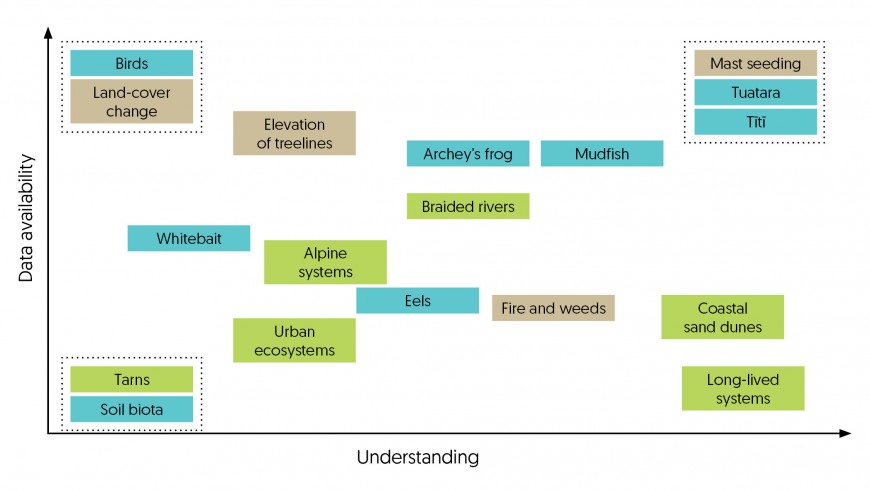Rapid advances in eradicating invasive species from islands – for example, via species-specific toxins and smart trapping methods – are improving conservation outcomes in these biodiversity hotspots. However, recent conservation gains could be reversed not only by future invasions from non-native species but also by future extinctions of native species, both of which may be driven by global environmental changes.
The problem, according to Manaaki Whenua’s Dr Sarah Richardson, Dr Duane Peltzer and colleagues, writing in the journal Frontiers in Ecology, is that we don’t know what we don’t know about these system-level environmental changes.
Climate-change impacts are complex to study. They are often indirect (operating through an intermediate factor, such as fire caused by drought), interactive (where climate-change effects depend on the effects of another factor, such as warming caused by changes in land-use affecting surface temperatures), or synergistic (producing a combined effect greater than the sum of separate effects). In all three cases, changing climate also magnifies other stressors, such as habitat fragmentation caused by human activity or the expansion of invasive species into areas currently free of them.

A data availability–understanding matrix showing species and populations (blue), habitats and ecosystems (green), and ecological processes (brown) that are vulnerable to climate change in New Zealand. Understanding includes knowledge, insights and wisdom.
Another problem is that reliable data and deep, contextual understanding are rare. Our knowledge of forests is generally good, partly because our conservation estate is concentrated in mountain landscapes, but we know less about lowland lakes and wetlands, as the matrix diagram shows. The matrix emerged from a group discussion at a workshop, led by the University of Auckland’s Cate McInnis-Ng and funded by the Biological Heritage National Science Challenge, which drew on a wide spectrum of expertise in ecology, conservation, and mātauranga Māori (indigenous knowledge in New Zealand). Items in the same boxes have similar data availability and understanding. Data availability is self-explanatory, whereas understanding requires not just data, but knowledge, insights, and wisdom drawn from those data. The farther to the right in the space, the better the understanding, and the higher up, the more extensive the available datasets are – but more data about what species are where don’t necessarily correlate with better understanding of how those species are being affected by processes such as climate change.
The authors recommend that defining knowledge gaps, and improving our knowledge of long-term system dynamics, the consequences of rare climatic events, and of how indirect processes and drivers affect New Zealand’s biota, will help refine and improve long-term conservation management. Climate-change research should be incorporated in all conservation research and management plans.
Data deficiencies can be addressed, at least in part, by uncovering databases or information lost or stored in unusual places, or through support and integration of geographically distributed datasets. Knowledge gaps and important insights into complex processes can also be addressed through greater inclusion of Māori into co-development of knowledge and conservation practice, for example by use of data contained within centuries-old, location-specific Māori planting calendars known as maramataka. Co-development of projects can use the best of all knowledge systems to achieve effective conservation outcomes. Respectful partnerships and inclusion of mātauranga Māori has additional benefits for conserving or renewing culture and people’s connection to the environment in Aotearoa New Zealand.
Key contact

